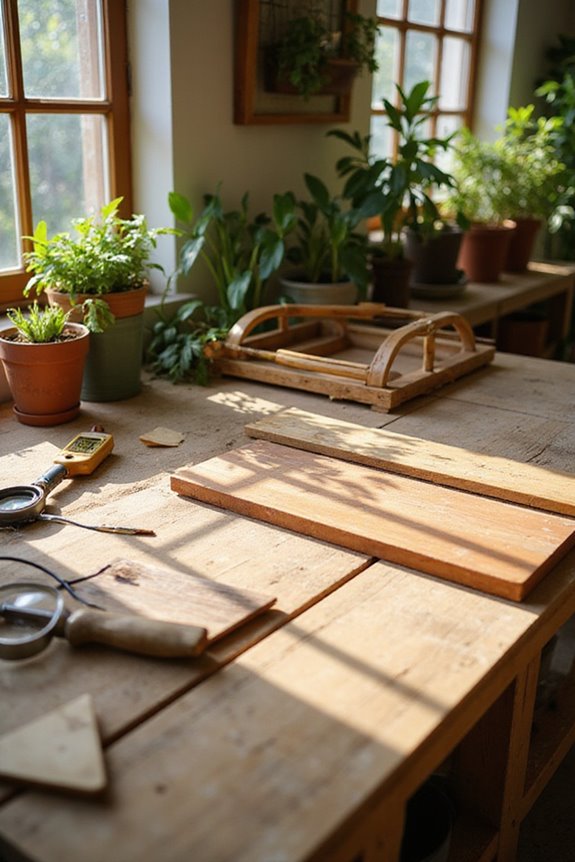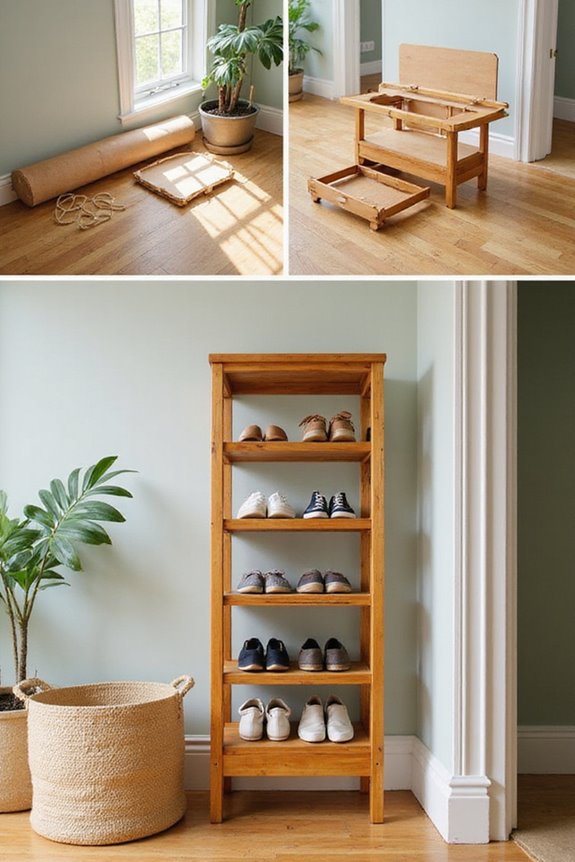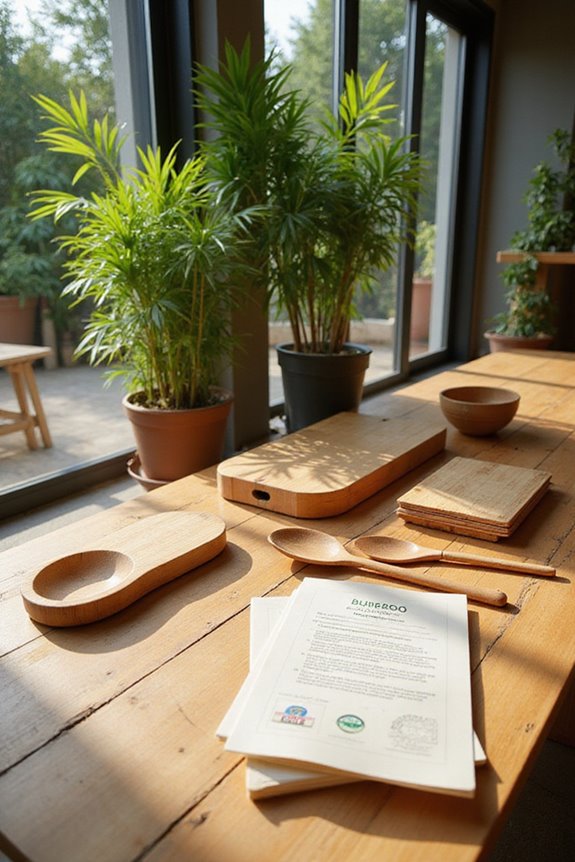To test bamboo product quality, we evaluate several key factors. First, we check the chemical composition, focusing on cellulose and lignin levels. Next, we assess physical properties like moisture content and density, which impact strength. We also conduct microbiological tests for safety, ensuring products are free from harmful bacteria. Finally, we examine aesthetic qualities, such as texture and surface defects. If you’re curious about more detailed protocols for testing, there’s plenty more to explore.
Key Takeaways
- Assess chemical composition to ensure high cellulose, hemicellulose, and lignin content for durability and strength.
- Evaluate physical properties like moisture content and density to determine overall performance and stability.
- Conduct microbiological testing to ensure safety by checking for antibacterial efficacy against harmful bacteria.
- Perform environmental assessments to confirm sustainable sourcing and compliance with certification standards like FSC.
- Inspect visual and aesthetic quality for surface defects, color consistency, and texture to enhance product appeal.
Chemical Composition Analysis
When we analyze bamboo’s chemical composition, we find that its major components are cellulose, hemicellulose, and lignin, which together make up more than 90% of its dry mass. Understanding these components helps us appreciate bamboo’s unique qualities.
- Minor Constituents: Bamboo also contains resins, tannins, and proteins. These contribute to its overall durability.
- Variability: Chemical composition can vary by species, age, and the specific part of the bamboo culm.
- Treatment Impacts: Chemical treatments, like bleaching, greatly alter bamboo’s structure. For instance, they can oxidize phenolic groups, affecting bonding properties. Additionally, the nutritional needs of bamboo can influence its growth and chemical composition.
Physical and Mechanical Property Evaluation
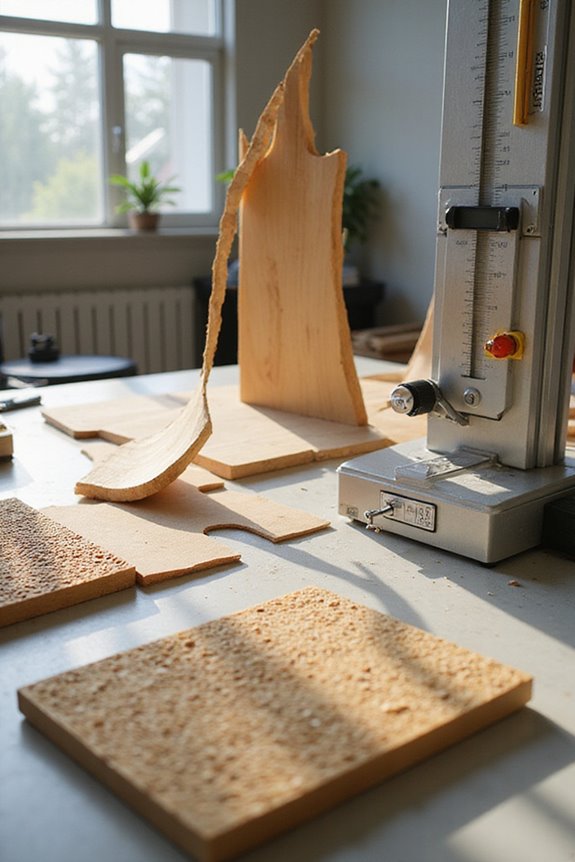
Evaluating the physical and mechanical properties of bamboo is essential for understanding its potential applications. We start with physical property evaluation, focusing on moisture content, density, and shrinkage. Moisture content must be measured on freshly felled specimens to guarantee accuracy. We also look at density, noting that it varies between bamboo parts, affecting strength.
Next, we examine mechanical performance through tests like compressive and tensile strength. Compressive strength is determined by applying a vertical load, while tensile strength measures resistance to pulling forces. Additionally, the eco-friendly features of bamboo flooring contribute to its overall appeal in sustainable design.
Lastly, we must remember that higher specific gravity often leads to better mechanical performance. By analyzing these properties systematically, we can ensure bamboo products meet quality standards for various uses.
Microbiological Testing for Safety
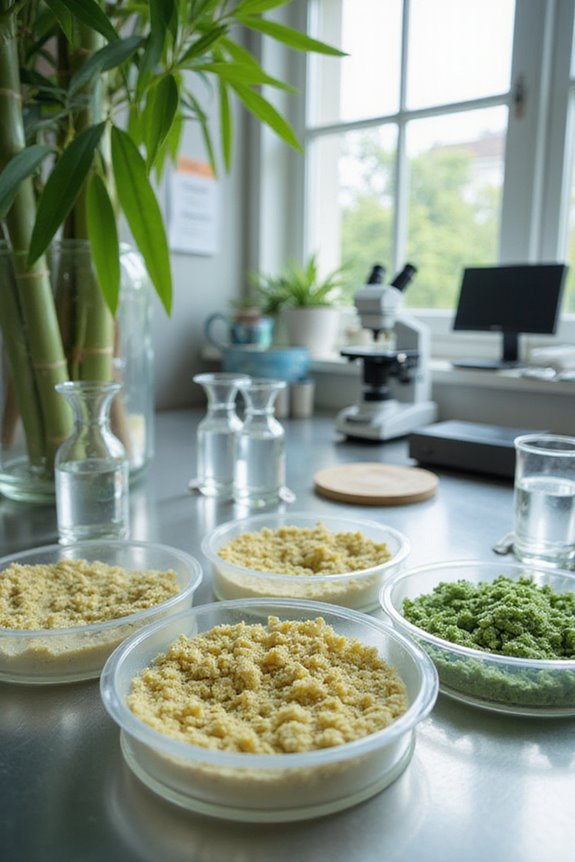
Microbiological testing is essential for ensuring the safety of bamboo products. First, we collect raw and fermented bamboo samples from various locations, capturing microbial diversity. After weighing the samples, we process them quickly to maintain their microbial profiles. Using selective growth media, we can identify different microbes based on their colony characteristics.
Next, we evaluate the antibacterial efficacy of bamboo. We expose common bacteria, like Staphylococcus aureus and Escherichia coli, to bamboo materials. By measuring the reduction in colony-forming units, we can assess how effective bamboo is at inhibiting harmful microbes.
Finally, understanding how extraction and processing impact these properties is vital. By optimizing these methods, we can enhance the safety of bamboo products for everyone.
Environmental and Sustainability Assessment
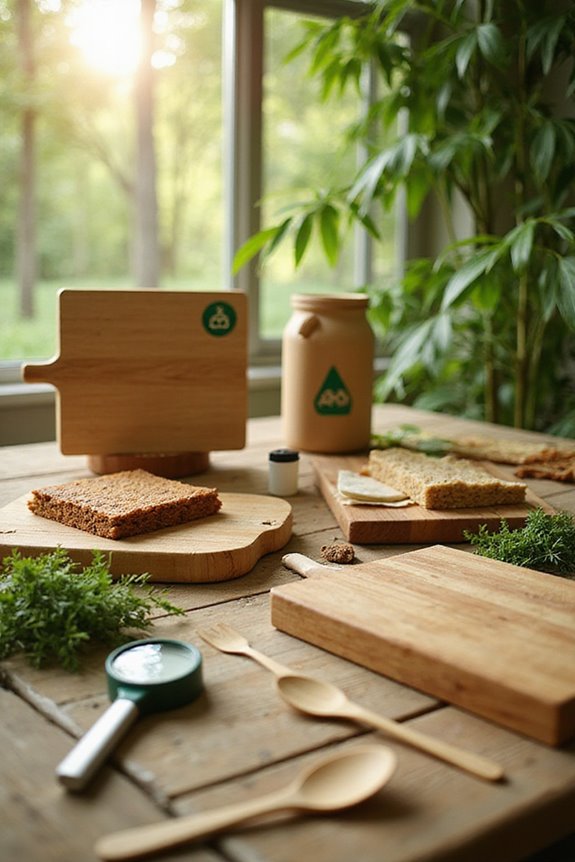
The safety of bamboo products extends beyond microbiological testing and into the domain of environmental and sustainability assessments. We need to guarantee that bamboo products are not only safe but also environmentally responsible. This includes biodegradability testing, which confirms that bamboo degrades naturally without harmful residues. It assures our products comply with sustainability standards.
Sustainable sourcing is another significant aspect. We must verify that bamboo is sourced from responsibly managed plantations. Certification bodies like the Forest Stewardship Council (FSC) help validate these practices, preventing overharvesting and protecting biodiversity. Additionally, the eco-friendly properties of bamboo make it an attractive option for consumers seeking sustainable solutions in their purchases.
Visual and Aesthetic Quality Inspection
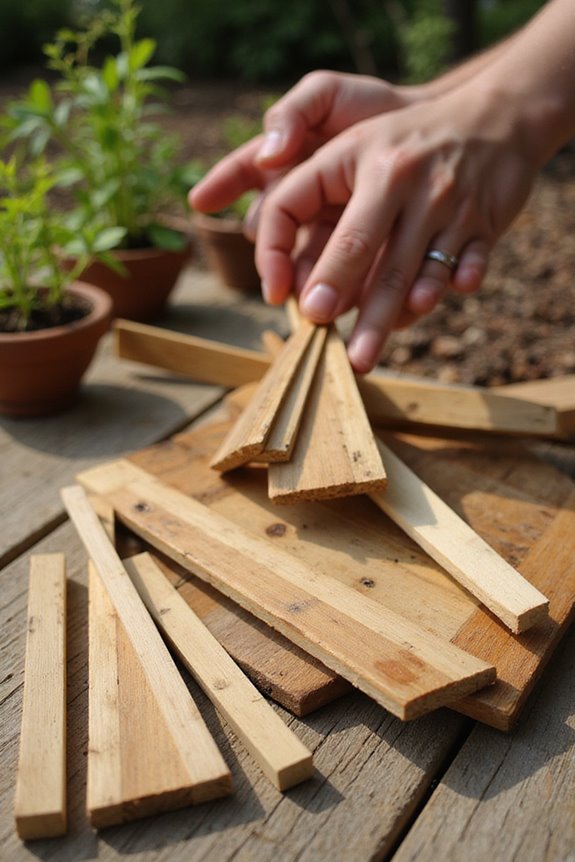
When examining bamboo products, we focus on visual and aesthetic quality to confirm they meet our standards. First, we look for surface defects such as cracks or discolorations that can affect both strength and appearance. Next, we check for color consistency to guarantee that the shades match product specifications, whether natural or caramelized.
Texture analysis is essential; we assess the smoothness and uniformity, as rough spots can compromise user experience. Finally, we examine the grain pattern for consistency, which adds to the product’s beauty and strength. By paying close attention to these details, we confirm that each bamboo item not only meets functional requirements but also enhances the aesthetic appeal for our community. Additionally, the use of sustainable materials in bamboo furniture contributes to a greener lifestyle, making quality inspection even more critical.
Standardized Testing Protocols
Standardized testing protocols are essential to confirm the quality and safety of bamboo products. These protocols help ascertain product consistency across various applications. For instance, formaldehyde emission measurements keep indoor air safe, while pesticide residue analysis checks for harmful chemicals on bamboo used in food products. Mechanical tests, like tensile and bending strength assessments, determine how much force bamboo can withstand, guaranteeing its durability. Additionally, antimicrobial effectiveness testing assures that treatments on bamboo kitchenware are safe and effective. Proper maintenance and care can further enhance the longevity and performance of bamboo products.
Moisture Content and Conditioning Procedures
Moisture content plays an essential role in determining the quality and usability of bamboo products. To guarantee accuracy in moisture measurement, we often rely on conventional oven-drying methods as a reference. However, using moisture meters like Benetech or Brookhuis is common, and these devices need specific calibration techniques for different bamboo species due to their unique structures.
When testing, we can measure moisture through the exterior or by puncturing the culm end, with exterior measurements often preferred for larger samples. Conditioning procedures are equally important; they involve monitoring environmental factors like temperature and humidity, which affect moisture levels. By following these steps, we can establish reliable benchmarks and guarantee the bamboo is fit for various applications. Additionally, understanding the environmental impact of bamboo flooring can enhance our knowledge of how moisture affects product quality.
Frequently Asked Questions
What Are the Signs of Poor-Quality Bamboo Products?
When we sift through bamboo products, we must beware of cheap bamboo masquerading as quality. If we spot bamboo splinters or misleading labels, it’s a clear sign we’re not getting the genuine article.
How Can I Identify Sustainably Sourced Bamboo?
To identify sustainably sourced bamboo, we should look for certifications like FSC. Understanding the bamboo lifecycle and sustainable harvesting practices helps us feel connected to responsible choices that support both the environment and local communities.
What Certifications Should I Look for in Bamboo Products?
When we’re choosing bamboo products, let’s look for certification labels like FSC and organic certifications. These eco-friendly standards guarantee we’re supporting sustainability and ethical practices, making us feel good about our choices together.
Can Bamboo Products Be Recycled?
We’ve seen communities successfully implement bamboo recycling programs, turning waste into eco-friendly alternatives like composite panels. By embracing these practices, we can collectively reduce waste and promote sustainable living while enjoying the benefits of bamboo products.
How Does Bamboo Compare to Other Materials in Terms of Durability?
When we consider bamboo durability, its strength comparison against other materials reveals impressive longevity factors. Bamboo withstands rot and decay, making it a sustainable choice for us, combining resilience with eco-friendliness in our projects.

